The Second World War was not merely a conflict of armies and ideologies, it was also a war of logistics and diplomacy.
Among the less obvious but important instruments of the war were military timepieces, especially wristwatches designed for pilots, soldiers, and naval personnel.
At the heart of this quiet but vital front was Switzerland, a neutral nation that, despite its stance, found itself supplying watches to both the Allied and Axis powers.
Switzerland’s geographic and political position during WW2 placed it in a unique and ethically complex position. While it declared strict neutrality, it was economically entwined with both sides of the war. Swiss manufacturers, including watchmakers, were permitted to continue trade with Germany and the Allies under certain conditions.
At the beginning of the war, Switzerland was heavily reliant on Germany for the import of vital raw materials, such as coal and iron. Germany used this to their advantage and pressed Switzerland to offer other products in return, such as wristwatches.
One of the leading Swiss watch manufacturers during WW2 was International Watch Company (IWC), whose watches would adorn the wrists of both the German Luftwaffe and the British Army.
IWC was originally founded in 1868 by American engineer and watchmaker, Florentine Ariosto Jones, in Schaffhausen, Switzerland. Jones aimed to combine advanced American production techniques with skilled Swiss craftsmanship. Renowned for its innovation, precision engineering, and technical advancements, IWC is considered to be one of the most revered Swiss watch brands of the 20th century.
In the lead-up to and during the early stages of the war, Germany sought to supply its Luftwaffe navigators with specialised aviation watches. These watches needed to be legible, robust and extremely accurate. The solution came in the form of the “Beobachtungsuhr”, or B-Uhr.
These watches were very large in size (55mm) and were made to a standard specification. The movements were uniformly cased in a grey varnished, brass or steel housing with a snap-on back cover. Their dials were black with large luminous Arabic numerals and minute and second indicators. The hands were coated with radium so the watch would glow in the dark, and the movement featured a hacking mechanism to aid precise time setting. The outer casing had FL23883 engraved on the left-hand side. FL designated Flieger, and 23 identified the watch as a navigation watch.
There were five manufacturers of the B-Uhr, with IWC being the rarest, having only produced around 1,000 examples in 1940. The IWC B-Uhr was powered by their very fine 52 calibre movement.
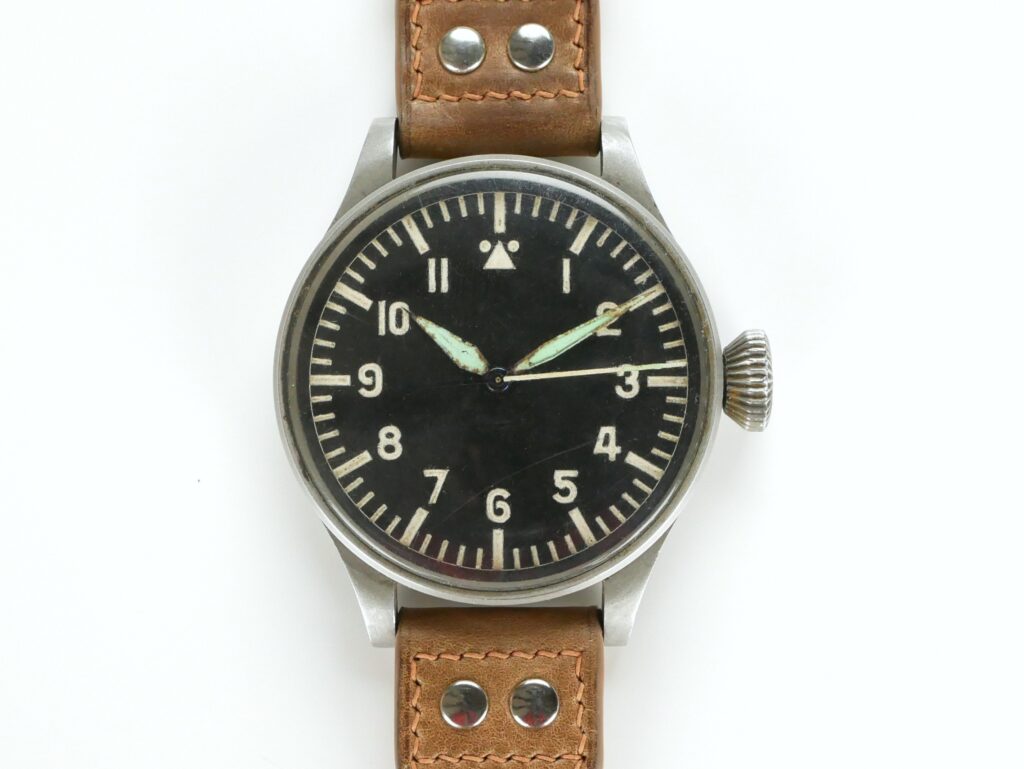
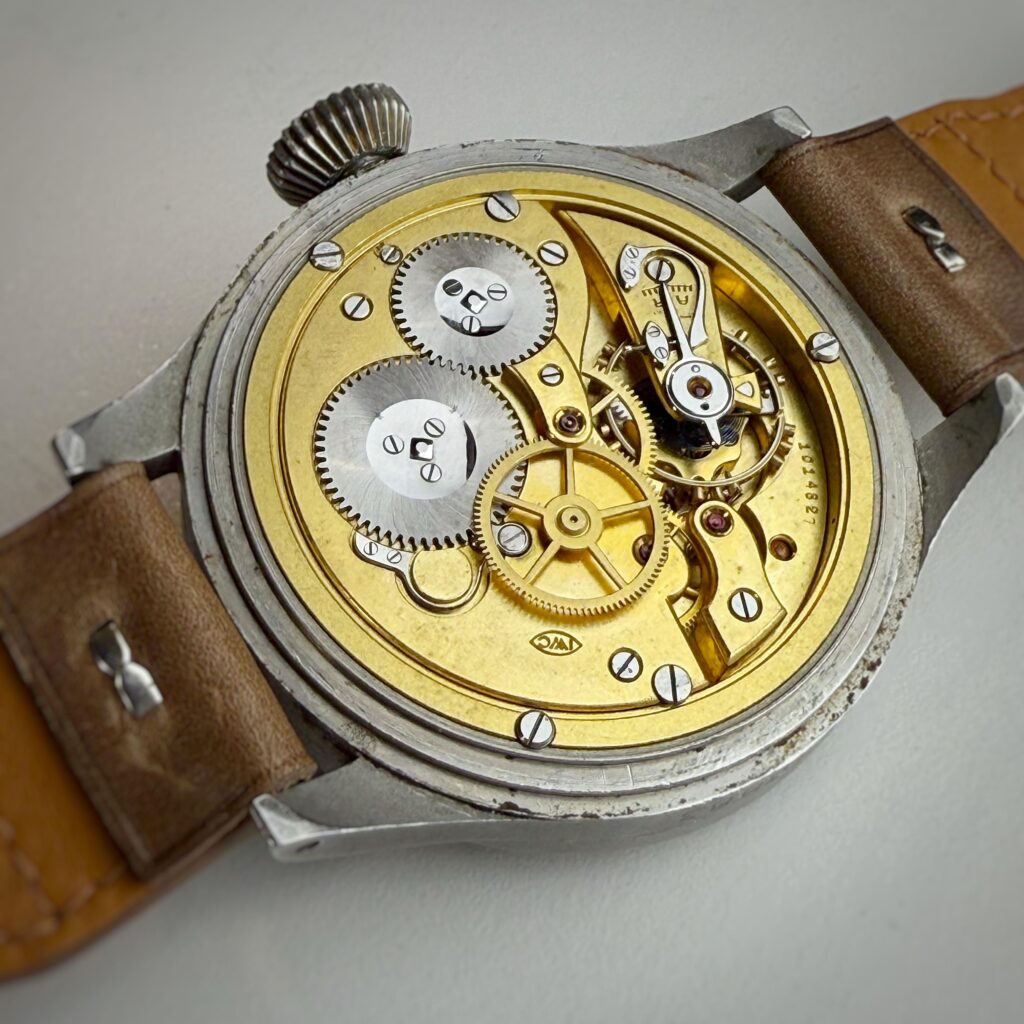
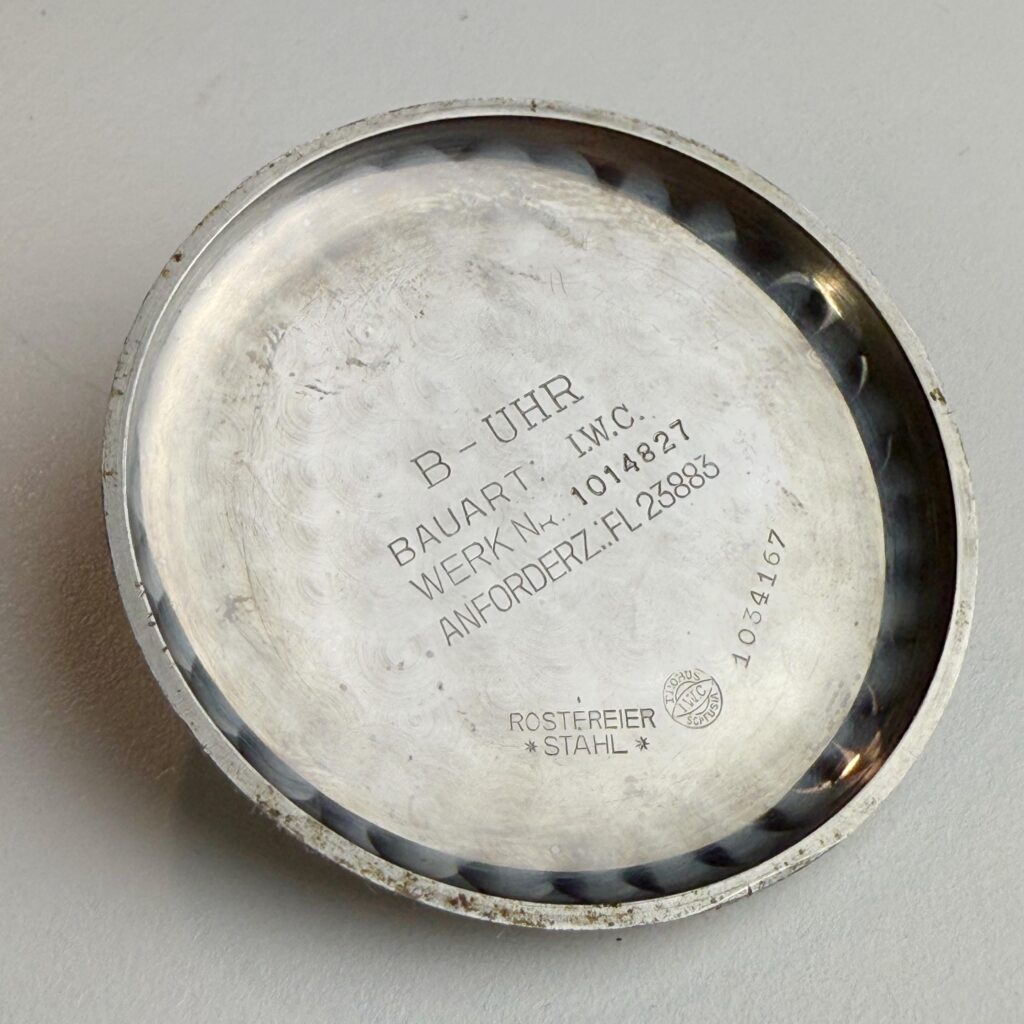
From 1943 onwards, the war had begun to turn in favour of the Allies, and the Germans were unable to supply the Swiss with the raw materials they required. German-Swiss trade was dramatically reduced, which led to the Swiss being granted higher trade exports to Britain.
From 1940 to 1944, official exports from Switzerland to Britain, including watches and other items, had, understandably, been restricted. This caused the need for some essential equipment, such as certain timepieces and other war related material, being smuggled into the country through the post, diplomatic courier or via third parties in neutral countries.
In around 1944, the British Army began the procurement of a new wristwatch, specifically designed and manufactured to their requested specification. The watches they had used prior to this had been produced for the civilian market and were not always suitable.
The required specification called for a black dial with white Arabic numerals, luminous hour markers, a sub-seconds dial at 6 o’clock, and luminous hour and minute hands. The watch also needed to be waterproof and fitted with a shatterproof Perspex crystal.
The new wristwatches, known today as the WWW’s, began being manufactured and issued to the British Army in early 1945. WWW stands for Watch, Wrist, Waterproof and was the descriptive code used by the British Army to identify it as a piece of equipment.
Due to the Allied advance to the western Swiss border by August 1944, the usual trade routes from Switzerland to the Allied territories had been re-established. This meant deliveries of the WWW’s could be carried out unheeded by the Germans.
Including IWC, there were 12 Swiss manufacturers of the WWW watches, and as such, they are commonly referred to by collectors and dealers alike as “The Dirty Dozen”
IWC produced around 6,000 examples of the WWW, which utilised their highly regarded 83 calibre movement.
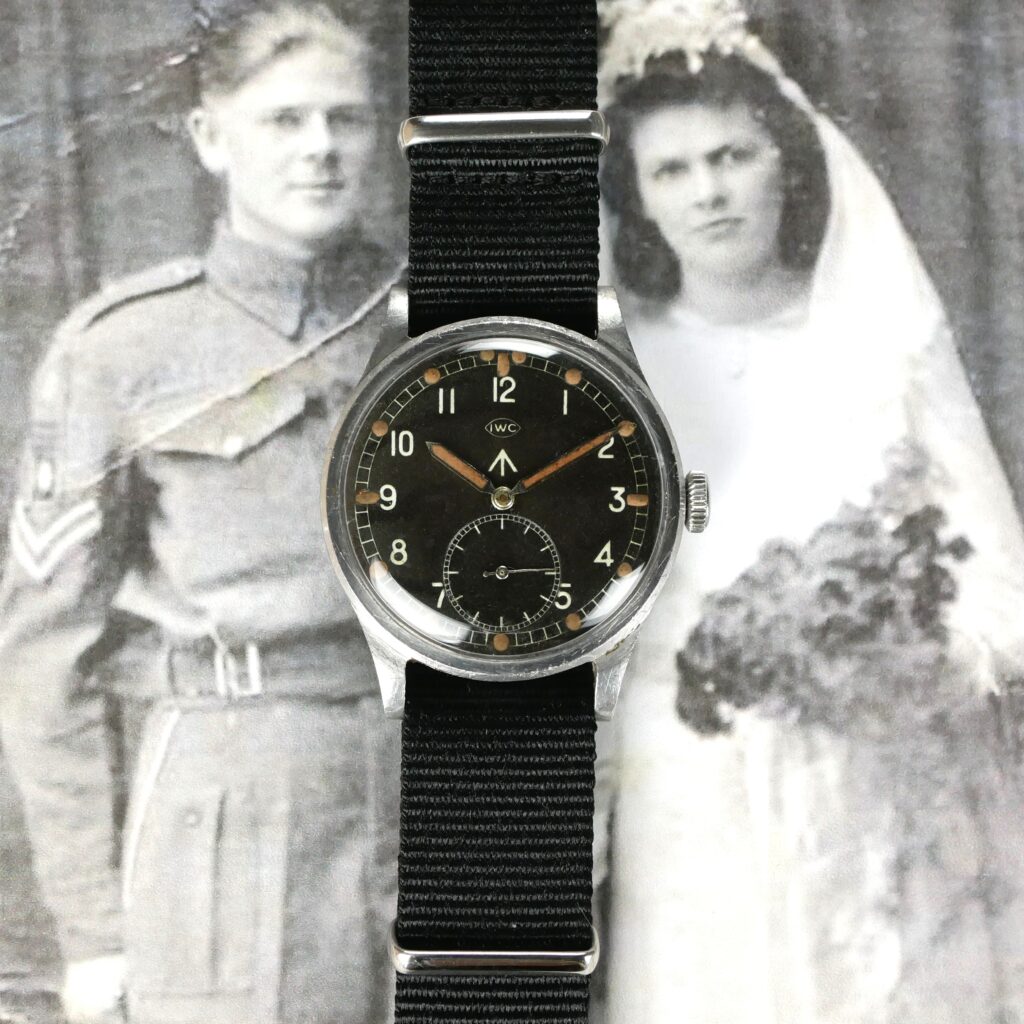
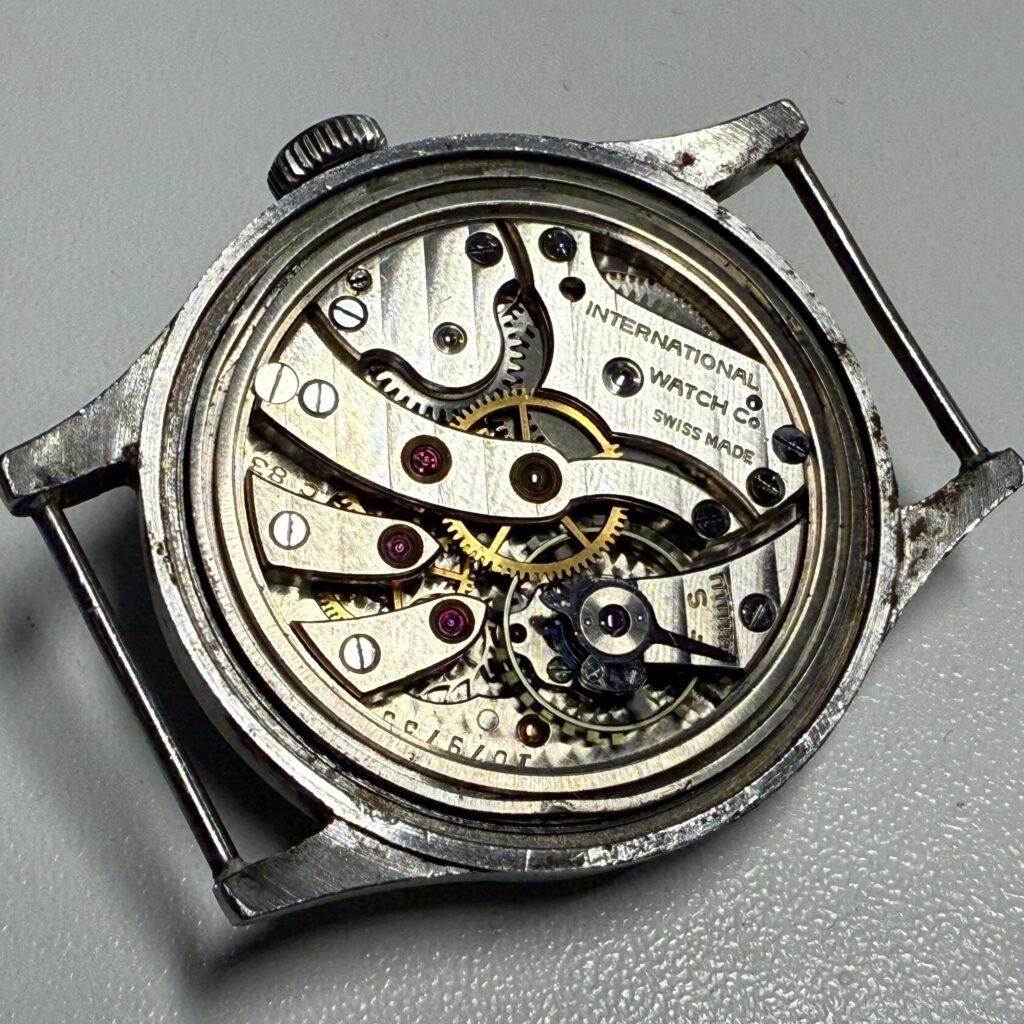
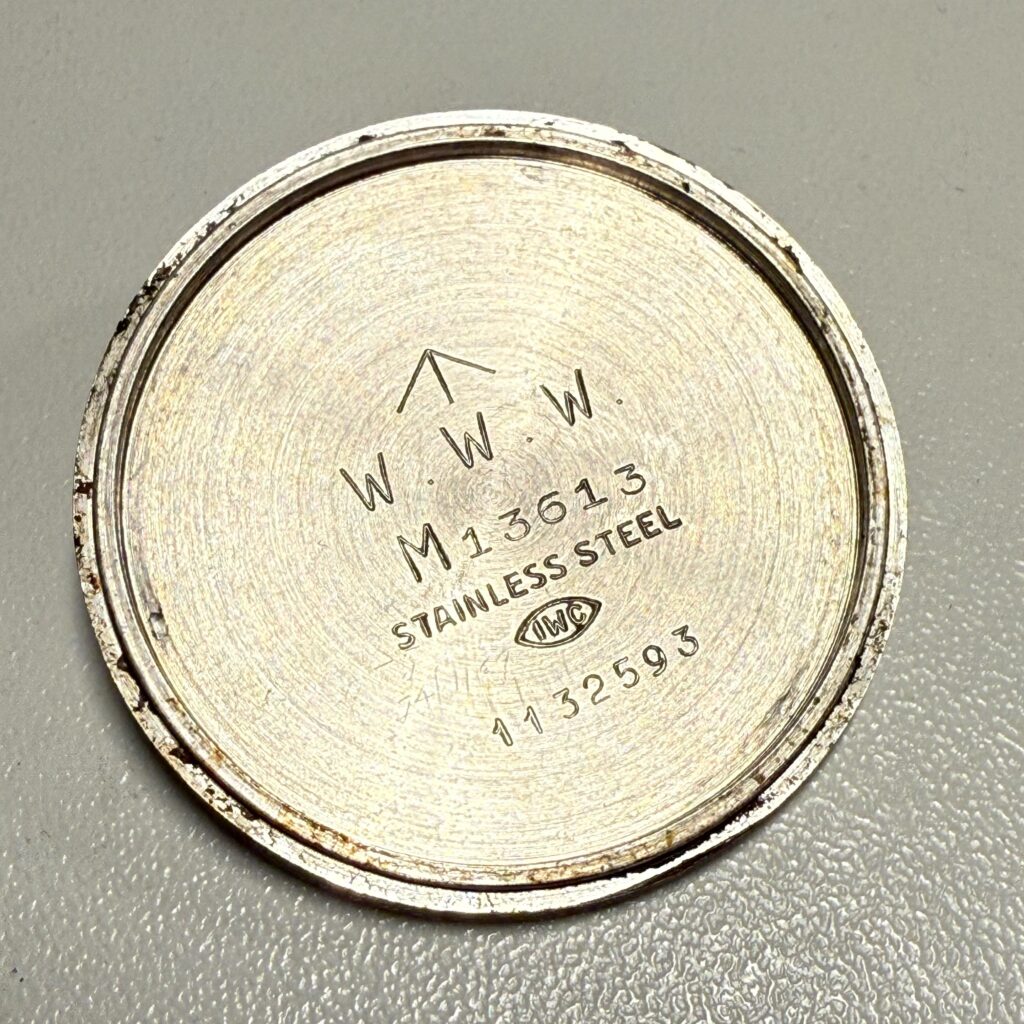
The exceptional IWC WWW above is the former property of Regimental Sgt Major Harry Skilton of the East Surrey Regiment. The accompanying photograph shows Harry Skilton on his wedding day in 1943 with his new bride who is wearing a dress made from an RAF parachute.
Skilton joined the British Army at the tender age of fourteen after lying about his age and served in North Africa, Sicily and Monte Casino. In October 1942, Skilton participated in Operation Torch with the 1st Battalion of the East Surrey Regiment. The Battalion initially had a compliment of 796, but by May 1945, Skilton was one of only eighteen men who remained, as most had been killed or wounded.
Despite Switzerland’s neutrality, IWC’s hometown of Schaffhausen did not escape the fighting entirely. On 1 April 1944 the Swiss town was accidently bombed by the U.S. Air Force, which resulted in a number of lives being lost and widespread damage. The IWC factory itself was hit by a bomb which crashed through the rafters but failed to detonate.
After the war, IWC re-established its connections in Europe and America along with Australia and the Far East. In 1948, they famously produced their iconic Mk 11 wristwatch for the British Royal Air Force, which was powered by their legendary 89 calibre movement.
A fabulous IWC Mk 11 c.1951, which features in our journal entitled, “The Weapons Boffin & His IWC Mk 11” can be found on our website.
The history of IWC, and the Swiss watchmaking industry in general, during WW2 is interesting, albeit perhaps somewhat morally ambiguous. Yet what remains undeniable is the exceptional quality of the timepieces they produced; tools of war that served the men who wore them, regardless of their flag or cause.
Thank you for your interest.